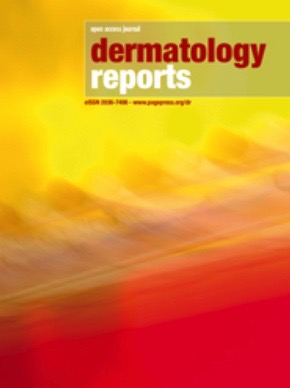 Smart Citations
Smart CitationsSee how this article has been cited at scite.ai
scite shows how a scientific paper has been cited by providing the context of the citation, a classification describing whether it supports, mentions, or contrasts the cited claim, and a label indicating in which section the citation was made.
Psoriasiform rash possibly induced by oral propranolol in a 12-month-old girl with infantile hemangioma: a case report and literature review
Infantile hemangiomas are the most common soft-tissue tumors in children, with propranolol, a non-cardioselective β-blocker, considered the first-line treatment for complicated cases. β-blockers have been reported to be the most common causative agents for drug-induced psoriasis in adults. In the pediatric population, only one previous case exists. We report the case of a 12-month-old girl who developed a psoriasiform rash after starting oral propranolol for infantile hemangiomas on the scalp. The patient had no personal or family history of psoriasis, and the rash appeared one week post-initiation of propranolol, presenting as well-defined erythematous, scaly plaques over the body, including the scalp. Infectious causes were excluded, and the rash was diagnosed as a psoriasiform rash, possibly induced by oral propranolol. The patient was switched to atenolol, which resulted in improvement of the hemangioma and complete resolution of the skin lesions. This case highlights the rare but significant risk of psoriasiform eruptions associated with β-blocker therapy in infants, emphasizing the need for careful recognition and monitoring of this potential adverse effect in pediatric patients treated for infantile hemangiomas.
How to Cite

This work is licensed under a Creative Commons Attribution-NonCommercial 4.0 International License.








